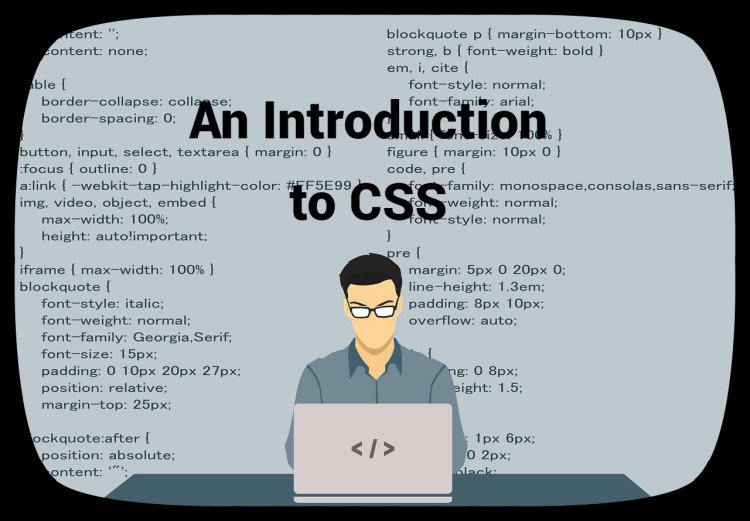Mastering CSS: The Ultimate Beginner's Guide to Web Styling - w9school
Unlock the power of CSS with our comprehensive guide for beginners. Learn the art of web styling and design effortlessly!

CSS Introduction |
|
CSS is the acronym of “Cascading Style Sheets”. CSS is a computer language for laying out and structuring web pages (HTML or XML). This language contains coding elements and is composed of these “cascading style sheets” which are equally called CSS files (. css).
It is typically used alongside HTML and JavaScript to create interactive and visually appealing web experiences.
|
Benefits of Learning CSS |
|
Learning CSS offers several benefits for web developers and designers. Here are some of the key advantages: 1. Enhanced Web Design: CSS enables you to have precise control over the appearance of web pages. By learning CSS, you can create visually appealing and professional-looking designs, customize fonts, colors, layouts, and overall styling to match your vision. 2. Separation of Presentation and Structure: CSS allows you to separate the presentation layer (styling) from the structure and content of a web page (HTML). This separation improves the maintainability and flexibility of your codebase. You can make changes to the styling without affecting the underlying structure, which makes updates and modifications easier. 3. Consistency and Efficiency: With CSS, you can define styles once and apply them to multiple elements throughout your website. This promotes consistency in design and saves time by eliminating the need to repeat styling instructions for each element individually. 4. Responsive Web Design: CSS plays a crucial role in creating responsive websites that adapt to different screen sizes and devices. By using CSS media queries and responsive techniques, you can design layouts that are optimized for various devices, including desktops, tablets, and mobile phones. 5. Improved User Experience: CSS can contribute to an enhanced user experience by adding visual effects, animations, and transitions. These features can make your website more engaging and interactive, resulting in a positive user impression and increased user engagement. 6. Browser Compatibility: CSS is widely supported by modern web browsers, making it a reliable and stable technology for designing websites. Learning CSS ensures that your designs will work across different browsers and devices, providing a consistent experience to your users. 7. Efficient Updates and Maintenance: When you use CSS to separate the presentation layer from the content, it becomes easier to make updates and modifications to your website. By making changes to the CSS file, you can apply those changes globally, affecting all pages that use the same styles, which simplifies maintenance and reduces code redundancy. 8. Compatibility with Other Web Technologies: CSS integrates well with other web technologies, such as HTML and JavaScript. By having a solid understanding of CSS, you can effectively collaborate with developers using these languages and implement complex web functionalities.
Overall, learning CSS empowers you to create visually appealing, responsive, and user-friendly websites while improving efficiency and code maintainability. It is an essential skill for anyone involved in web development or design. |
|
Remember, learning programming languages may require patience and dedication, but the rewards are immense. Whether you want to build applications, websites, or pursue a career in technology, learning programming can open doors to exciting opportunities. |
Why should we use CSS? |
|
CSS (Cascading Style Sheets) is used for a variety of reasons in web development. Here are some key reasons why CSS is widely used: 1. Separation of Concerns:
2. Consistent Styling:
3. Flexibility and Customization:
4. Responsive Web Design:
5. Efficiency and Performance:
6. Accessibility:
7. Browser Compatibility:
8. Animation and Interactivity:
In summary, CSS provides powerful tools for styling web pages, enabling developers to create visually appealing, responsive, and consistent designs. It enhances code maintainability, performance, and user experience, making it an essential skill for modern web development. |
|
|
CSS Example |
Why was CSS created? |
|
Mainly CSS was created to solve a big problem. CSS (Cascading Style Sheets) was created to address the limitations and challenges faced by web developers in styling and formatting web pages. Prior to CSS, web design was primarily done using HTML, which was primarily focused on structuring and presenting the content of a web page. The main problem that every web developer was facing at that time was if they want to style a web page or overall website they have to style each and every content of the website.They have to go through every file that is related to that website and it was very time taking and long procedure that eventually cost a lot. That's why W3C (World Wide Web Consotium) created CSS to solve this problem. CSS was created to separate the presentation layer from the content layer, improve consistency and reusability, and provide greater control over styling aspects. It also introduced media queries and responsive techniques, enabling developers to create layouts that adjust and reflow content based on the user's device. CSS has become an integral part of web development, making websites visually appealing, responsive, and easier to maintain. After creation of CSS, web developer's work was very easy and short comparing to prior to CSS. Now they create a saparate file with extension .css with all other web pages and link them to each other and whenever they want to style a web page they just open .css file and update it. Simply this way all web pages on the website gets updated automatically. CSS Saves a Lot of Work!The style definitions are normally saved in external .css files. With an external stylesheet file, you can change the look of an entire website by changing just one file! |
What's Your Reaction?


















